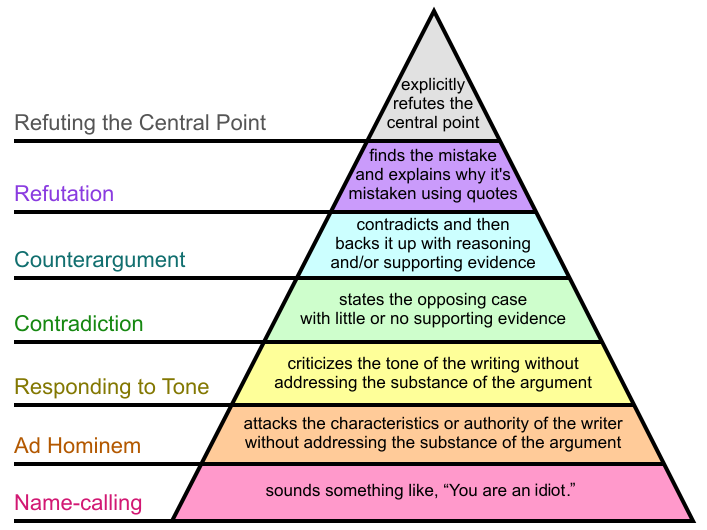Thursday, May 07, 2020 11:03:08 AM
HERA did not alter that capital basis, only gave the Director the ability to modify it during conservatorship.
The last two words are false here. The FHFA director can modify the risk-based and minimum capital requirements at any time, even when FnF are not in conservatorship.
I would suggest reading 12 USC 4611 and 4612; the word "conservator" (and thus the word "conservatorship") does not show up anywhere.
There is very low likelihood that any change will be made that lowers that number.
Impossible, actually. The statutory minimum that is referenced in the 10-Q form is the lowest that the minimum capital standard can be. Calabria has the authority to make it higher, and I fully expect him to do so. This American Banker article supports my position:
Calabria also said the new proposal will largely resemble the previous one issued under Watt, and will have detailed risk-based capital standards that will be “a lot more detailed on the mortgage side than you see on the banking side.”
He also emphasized his goal of closing the gap between the GSEs and similar entities, noting that the mortgage giants have been able to grow sharply because they are highly leveraged.
“I believe that anybody who's got a federal charter, who's holding mortgages, should essentially be holding very similar capital, and I think this is particularly illustrated in today's environment where we are potentially in a stressed environment in the mortgage market,” said Calabria.
The combined F&F total capital needing to be raised is somewhere above $200 B, IMO.
I disagree again, though this time I think your number is too high. I think FnF will only need to raise $75-100B, depending on Calabria's minimum standard.
However, what I think you missed is that either cancelling the seniors or converting them to commons will add $193B to core capital instantly. In the former case $193B gets added to retained earnings and in the latter it gets added to paid-in capital (both of which are part of core capital), while the seniors as they stand now are not part of core capital because they are cumulative.
I concur on your point that no dividends will resume until statutory capital requirements are fully met.
Why is this? What connection is there between statutory requirements and dividends? And do you mean the statutory minimum in 12 USC 4612(a) or the (likely higher) minimum Calabria will set?
I believe this is what creates the thirst for a JPS-to-common conversion whose goal was to preserve the safety of Liquidation Preference in case of a receivership, then do an end-around to convert to commons before the dividendless JPS goes into years of hibernation at well below par share prices.
Nonsense. Keeping junior pref dividends off only makes the re-IPO difficult to impossible due to a lack of a common dividend. The juniors are either getting near-immediate dividends (within 6 months of the re-IPO) or getting a conversion to commons (which still likely involves near-term dividend resumption).
There is no purpose served in keeping junior pref (and thus common) dividends off post-re-IPO.
Also, anything that keeps the junior pref prices suppressed to well below par means that the common share price will also remain low. Placement in the capital structure matters: impaired prefs (substantially below par) means nearly worthless commons.
If Calabria opens up the rulemaking processs to public comments, every common shareholder needs to raise concern over any JPS conversion as envisioned by Moelis.
There is no "if" about it. There will be a public comment period, just as there was with Watt's proposal. You can read the comments yourself. If you want some laughs, read the ones with no attachments; those are the ones that won't be taken seriously.
In order to get FHFA's respectful attention, rather than derision, I would suggest an attached file that has been checked for spelling and grammar mistakes as well as actual researched conclusions with citations.
Also, a Moelis 2.0 conversion should not scare current common shareholders at all; Moelis 2.0 has the commons going to the mid-teens. What current common shareholders should fear is a Citi-like conversion, which took the market completely by surprise and offered the pref shareholders a conversion ratio over 3 times that seen in the market the day before.
Glidelogic Corp. Becomes TikTok Shop Partner, Opening a New Chapter in E-commerce Services • GDLG • Jul 5, 2024 7:09 AM
Freedom Holdings Corporate Update; Announces Management Has Signed Letter of Intent • FHLD • Jul 3, 2024 9:00 AM
EWRC's 21 Moves Gaming Studios Moves to SONY Pictures Studios and Green Lights Development of a Third Upcoming Game • EWRC • Jul 2, 2024 8:00 AM
BNCM and DELEX Healthcare Group Announce Strategic Merger to Drive Expansion and Growth • BNCM • Jul 2, 2024 7:19 AM
NUBURU Announces Upcoming TV Interview Featuring CEO Brian Knaley on Fox Business, Bloomberg TV, and Newsmax TV as Sponsored Programming • BURU • Jul 1, 2024 1:57 PM
Mass Megawatts Announces $220,500 Debt Cancellation Agreement to Improve Financing and Sales of a New Product to be Announced on July 11 • MMMW • Jun 28, 2024 7:30 AM










